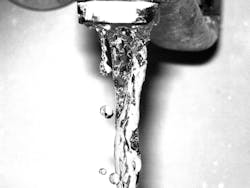The U.S. Environmental Protection Agency (EPA) is releasing preliminary water quality data about chlorine levels in Flint, Mich.’s drinking water, as well as an interactive map of sampling results in Flint. The map includes data from initial chlorine testing. As additional data become available, EPA will post the sampling locations and data to the map. The map is available here.
EPA’s chlorine sampling effort involves testing Flint’s drinking water for the presence of chlorine, with a focus on locations that are more likely to have lower chlorine levels. These include locations at the perimeter of the drinking water distribution system and where drinking water may be stagnant for a period of time before use. At locations where chlorine is not detected, EPA does follow-up testing for microbial contamination.
The current data show estimated concentrations of chlorine present in over 30 locations throughout the city, including private homes, churches and community centers. Chlorine is used to disinfect drinking water systems and prevent the growth of viruses and bacteria such as E. coli. At appropriate levels, the presence of chlorine in drinking water systems is normal. Additional information about chlorine and health is available on the Centers for Disease Control and Prevention (CDC)'s website.
Additional preliminary sampling data will be made available as soon as possible. Preliminary data should be considered raw, unprocessed information. EPA will post final data as soon as its quality has been assured. Typically, the rigorous quality control procedures used to finalize sampling data can take up to 30 days to complete.
NSF-International certified lead-removal filters are being distributed in Flint by the state of Michigan to remove lead from household water and make it safe for people to drink. The filters are only certified to 150 ppb. Residents are encouraged to have their water tested to be sure the levels are below 150 ppb. While water safety experts remain confident in the ability of the filters to remove the lead, vulnerable populations, especially pregnant women and children under 6 years old, should drink bottled water until they get results showing that their water is below 150 ppb.
EPA is also sampling drinking water in households with known lead levels of 100 ppb or higher, in order to test the effectiveness of these filters at removing lead at high concentrations.
EPA recommends that residents, if they have concerns, contact their local health provider to have themselves or their children tested for lead. EPA will continue to work with the city of Flint to monitor drinking water quality and to ensure the public is receiving up-to-date information. To learn more about the health effects of lead in water, visit the CDC website.
EPA is sampling homes with high levels of lead in tap water and will post that data as soon as it is available. Personal identifying information will be removed prior to public release. Data will be shared directly with homeowners immediately upon receipt. The state of Michigan is posting data from home lead sampling on their website.
Also, an EPA enforcement order requires that the state of Michigan collect samples from the water treatment and distribution system and post data to a publicly available website.
EPA information is available here.
Source: EPA


